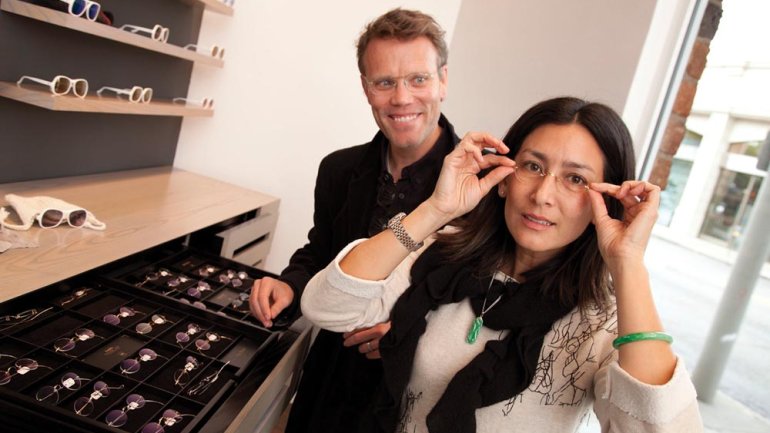Restoration Eyewear
Restoration Eyewear
RetroSpecs & Co.
363 N. Robertson Blvd.
West Hollywood, CA 90048
310-657-4217
Jay Owens started collecting and restoring old eyeglass frames as a hobby in college, then spent four years traveling the country in an RV, selling them at flea markets. Today his business, RetroSpecs & Co., has showrooms in Los Angeles and Las Vegas, and dealerships in 98 cities worldwide, offering antique frames impeccably refurbished at the company’s factory in L.A. More than 30,000 designs range from delicate early 20th-century filigrees to classic World War II-era Ray-Bans to the oversized mod shapes made popular by style icons such as Audrey Hepburn.
We visited Owens recently at the flagship store in West Hollywood, where, as if on cue, an assistant to a movie megastar dropped off the actor’s familiar frames for repair. Yet, Owens says, RetroSpecs is not selling status or bling, but rather an appreciation of eyewear as jewelry, fashion, artifact, and art object, and an old-fashioned bespoke approach to customer service – “extreme quality for everybody.”
What a beautiful space. Give us a tour?
Let’s start here – this is kind of fun [he shows a wood chest with narrow, graduated drawers neatly lined with hundreds of antique frames]. This is British, it would have been on a ship in the early 1800s, and it was a captain’s map chest. I found it at the Paris flea market 15 years ago, and the idea was it would be our archive.
What we have in here is the history of early modern gold-filled frames, basically from 1920 to 1950, a time of an explosion of design and creativity in eyewear. We started cataloguing them about 20 years ago, and this chest holds the definitive piece of every one we’ve seen. So we became experts at the restoration of these.
And we’ve since moved into the 1950s, ’60s and ’70s, when they used acetate frames – very, very high quality as well.
We also have our own line of South Indian buffalo horn frames. Our brand is about craftsmanship. We’re fascinated with hallmarks, and ours really represent not “retro,” but what leading manufacturers such as Bausch + Lomb, Ray-Ban, and Shuron represented in that time.
Along with the most expensive rarities, do you have frames that are affordable for the average discerning person?
Oh, yeah, we have a lot of customers like that. They want something special. We love that.
I have what I call the Four Cs. The first is craftsmanship – the best materials, attention to detail, the fundamental core. That’s what everyone wants to achieve – excellence in product, in every detail.
But if you don’t have custom? If you have craftsmanship, but it’s not personal? Then you lose something. I feel there’s a huge [niche] there, going back to how it used to be in the 1930s and ’40s, when you made a jacket or shoes for someone. Craftsmanship has a lot to do with custom.
Then there’s customer service, the promise that you will fully take care of the product. We’ll restore forever.
The last is that you create a community with your product, this whole sense of feedback and communication. You can do that now in the world. We’re helping people in that one little segment of their lives.
What are you wearing today?
This is a buffalo horn frame called the McQueen. It’s simple, a little bit ’40s. I love buffalo horn, the way it breathes. [Editor’s note: Horn, which grows back, is a sustainable material.] It’s like a baseball mitt to me. It just gets better as it goes.
Joyce Lovelace is American Craft’s contributing editor.

